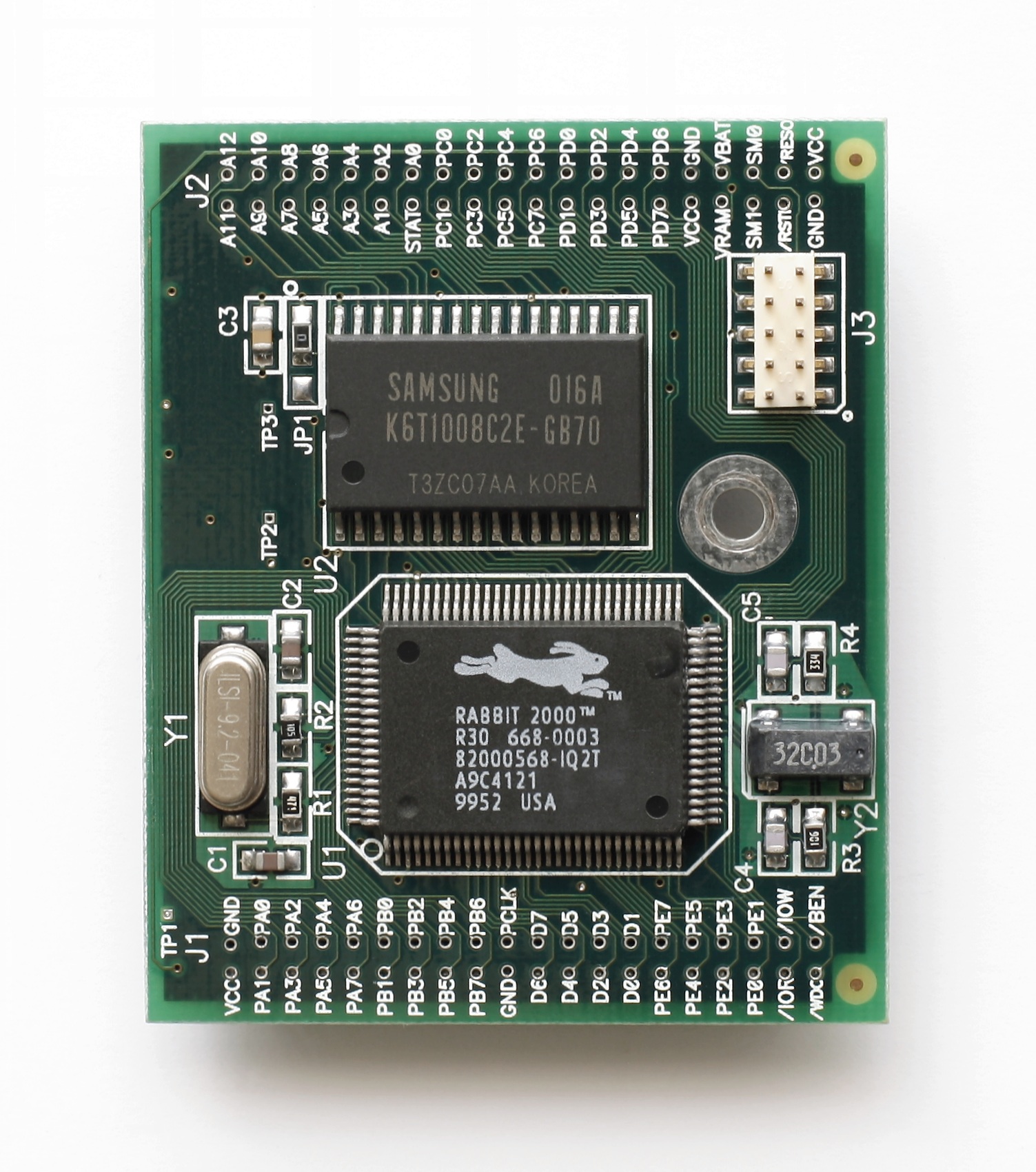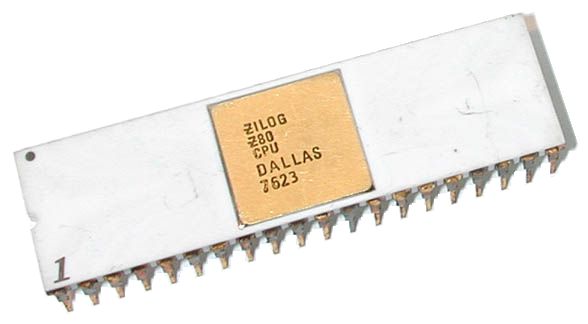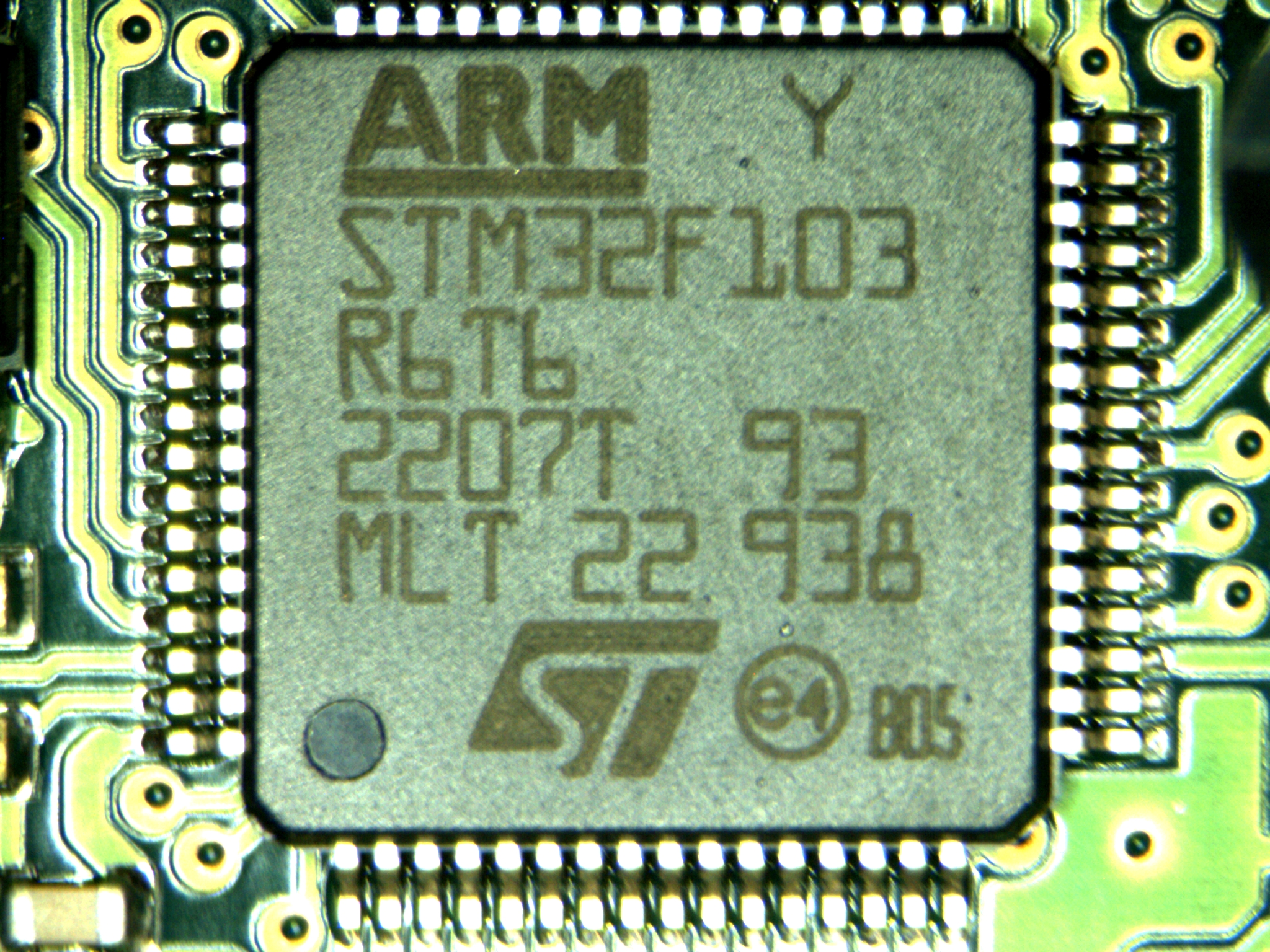|
Small Device C Compiler
The Small Device C Compiler (SDCC) is a free-software, partially retargetable C compiler for 8-bit microcontrollers. It is distributed under the GNU General Public License. The package also contains an assembler, linker, simulator and debugger. As of March 2007, SDCC is the only open-source C compiler for Intel 8051-compatible microcontrollers. In 2011 the compiler was downloaded on average more than 200 times per day. Supported hosts Sources, documentation, and binaries are available for Linux (32-bit and 64-bit), macOS (PPC and 64-bit), and Windows (32-bit and 64-bit). Supported targets The following include binary compatible derivatives: * Intel 8031, 8032, 8051, 8052; Maxim/Dallas DS80C390; C8051 * Motorola/Freescale/ NXP 68HC08 and 68HCS08 * Padauk PDK14 and PDK15 * STMicroelectronics STM8 * Zilog Z80, Z180, eZ80 in Z80 mode; Rabbit Semiconductor 2000, 2000A, 3000, 3000A, 4000; Sharp LR35902 (Game Boy processor); Toshiba TLCS-90; Z80N (ZX Spectrum Next processor). ... [...More Info...] [...Related Items...] OR: [Wikipedia] [Google] [Baidu] |
Freescale S08
The 9S08 (68HCS08 or S08 for short) is a 8-bit microcontroller (µC) family originally produced by Motorola, later by Freescale Semiconductor, and currently by NXP, descended from the Motorola 6800 microprocessor. It is a CISC microcontroller. A slightly extended variant of the 68HC08, it shares upward compatibility with the aging 68HC05 microcontrollers, and is found in almost any type of embedded systems. The larger members offer up to 128 KiB of flash, and 8 KiB of RAM via a simple MMU which allows bank-switching 16 KiB of the address space and an address/data register pair which allows data fetches from any address. The paging scheme used allows for a theoretical maximum of 4MB of flash. MMU equipped variants offer two extra CPU instructions, CALL and RTC, which are used instead of JSR and RTS respectively when dealing with subroutines placed in paged memory, allowing direct page-to-page subroutine calls. In a single atomic operation, CALL saves and RTC ... [...More Info...] [...Related Items...] OR: [Wikipedia] [Google] [Baidu] |
Microsoft Windows
Windows is a group of several Proprietary software, proprietary graphical user interface, graphical operating system families developed and marketed by Microsoft. Each family caters to a certain sector of the computing industry. For example, Windows NT for consumers, Windows Server for servers, and Windows IoT for embedded systems. Defunct Windows families include Windows 9x, Windows Mobile, and Windows Phone. The first version of Windows was released on November 20, 1985, as a graphical operating system shell for MS-DOS in response to the growing interest in graphical user interfaces (GUIs). Windows is the most popular desktop operating system in the world, with Usage share of operating systems, 75% market share , according to StatCounter. However, Windows is not the most used operating system when including both mobile and desktop OSes, due to Android (operating system), Android's massive growth. , the most recent version of Windows is Windows 11 for consumer Personal compu ... [...More Info...] [...Related Items...] OR: [Wikipedia] [Google] [Baidu] |
Maxim Integrated
Maxim Integrated, a subsidiary of Analog Devices, designs, manufactures, and sells analog and mixed-signal integrated circuits for the automotive, industrial, communications, consumer, and computing markets. Maxim's product portfolio includes power and battery management ICs, sensors, analog ICs, interface ICs, communications solutions, digital ICs, embedded security, and microcontrollers. The company is headquartered in San Jose, California, and has design centers, manufacturing facilities, and sales offices worldwide. History Maxim was founded in April 1983. The founding team included Jack Gifford, a semiconductor industry pioneer since the 1960s; Fred Beck, an IC sales and distribution pioneer; Dave Bingham, General Electric’s Scientist of the Year in 1982; Steve Combs, a pioneer in wafer technologies and manufacturing; Lee Evans, also a pioneer in CMOS analog microchip design and General Electric’s Scientist of the Year in 1982; Dave Fullagar, inventor of the first inte ... [...More Info...] [...Related Items...] OR: [Wikipedia] [Google] [Baidu] |
Rabbit 2000
The Rabbit 2000 is a high-performance 8-bit microcontroller designed by Rabbit Semiconductor for embedded system applications. Rabbit Semiconductor has been bought by Digi International, which is since selling the Rabbit microcontrollers and hardware based on them. The instruction set is based on the original Z80 microprocessor, but with some additions of new instructions as well as deletions of some instructions. Among the Z80 instructions missing in the Rabbit, cpir is particularly notable, since it allows for much more efficient implementations of some often-used standard C functions such as strlen(), strnlen() and memchr(). According to the Rabbit documentation, it executes its instructions 5 times faster than the original Z80 microprocessor, that is, similarly to the Zilog eZ80. The Rabbit 3000 is a variant of the Rabbit 2000 with the same core, but more powerful integrated peripherals. The Rabbit 3000A variant adds a small number of additional instructions for I/O and la ... [...More Info...] [...Related Items...] OR: [Wikipedia] [Google] [Baidu] |
Rabbit Semiconductor
Rabbit Semiconductor is an American company which designs and sells the Rabbit family of microcontrollers and microcontroller modules. For development, it provides Dynamic C, a non-standard dialect of C with proprietary structures for multitasking. Rabbit Semiconductor was purchased in 2006 by Digi International for $49 million. Before the purchase, Rabbit Semiconductor was a division of Z-World, Inc. Z-World developed and manufactured embedded controller products as well as embedded software development environments. Microcontroller architecture The Rabbit processor family shares many features with the Zilog Z80/Z180 processors. For example, the registers of a Rabbit 2000/3000 processor are almost the same as the registers of a Z80/Z180 processor. The Rabbit 4000 processor expands to include the use of 32-bit registers. The instruction set In computer science, an instruction set architecture (ISA), also called computer architecture, is an abstract model of a computer. A d ... [...More Info...] [...Related Items...] OR: [Wikipedia] [Google] [Baidu] |
EZ80
The Zilog eZ80 is an 8-bit microprocessor from Zilog, introduced in 2001. eZ80 is an updated version of the company's first product, the Z80 microprocessor. Design The eZ80 (like the Z380) is binary compatible with the Z80 and Z180, but almost three times as fast as the original Z80 chip at the same clock frequency. The eZ80 has a three-stage pipeline. Available at up to 50 MHz (2004), the performance is comparable to a Z80 clocked at 150 MHz if fast memory is used (i.e. no wait states for opcode fetches, for data, or for I/O) or even higher in some applications (a 16-bit addition is 11 times as fast as in the original). The eZ80 also supports direct continuous addressing of 16 MB of memory without a memory management unit, by extending most registers (HL, BC, DE, IX, IY, SP, and PC) from 16 to 24 bits. In order to do so, the CPU has a full 24-bit address mode called ADL mode. Z80 register pairs are extended to 24 bits and renamed with U e.g. HL is now HLU ... [...More Info...] [...Related Items...] OR: [Wikipedia] [Google] [Baidu] |
Z180
The Zilog Z180 eight-bit processor is a successor of the Z80 CPU. It is compatible with the large base of software written for the Z80. The Z180 family adds higher performance and integrated peripheral functions like clock generator, 16-bit counters/timers, interrupt controller, wait-state generators, serial ports and a DMA controller. It uses separate read and write strobes, sharing similar timings with the Z80 and Intel processors. The on-chip memory management unit (MMU) has the capability of addressing up to 1 MB of memory. It is possible to configure the Z180 to operate as the Hitachi HD64180. Variants Z80182 The Zilog Zilog, Inc. is an American manufacturer of microprocessors and 8-bit and 16-bit microcontrollers. It is also a supplier of application-specific embedded system-on-chip (SoC) products. Its most famous product is the Z80 series of 8-bit microp ... Z80182, introduced in 1997, is an enhanced, faster version of the older Z80 and is part of the Z180 m ... [...More Info...] [...Related Items...] OR: [Wikipedia] [Google] [Baidu] |
Zilog
Zilog, Inc. is an American manufacturer of microprocessors and 8-bit and 16-bit microcontrollers. It is also a supplier of application-specific embedded system-on-chip (SoC) products. Its most famous product is the Z80 series of 8-bit microprocessors that were compatible with the Intel 8080 but significantly cheaper. The Z80 was widely used during the 1980s in many popular home computers such as the TRS-80, MSX, Amstrad CPC and the ZX Spectrum, as well as arcade games such as '' Pac-Man''. The company also made 16- and 32-bit processors, but these did not see widespread use. From the 1990s, the company focused primarily on the microcontroller market. The name (pronunciation varies) is an acronym of ''Z integrated logic'', also thought of as "Z for the last word of Integrated Logic". In the oral history interview video which Federico Faggin (co-founder of Zilog) recorded for the Computer History Museum, he pronounced Zilog with a long "i" () consistently. History Zilog wa ... [...More Info...] [...Related Items...] OR: [Wikipedia] [Google] [Baidu] |
STM8
The STM8 is an 8-bit microcontroller family by STMicroelectronics. The STM8 microcontrollers use an extended variant of the ST7 microcontroller architecture. STM8 microcontrollers are particularly low cost for a full-featured 8-bit microcontroller. Architecture The STM8 is very similar to the earlier ST7, but is better suited as a target for C due to its 16-bit index registers and stack pointer-relative addressing mode. Although internally a Harvard architecture it has "memory bridge" that creates a unified 24-bit address space, allowing code to execute out of RAM (useful for in-system programming of the flash ROM), and data (such as lookup tables) to be accessed out of ROM. On access the "memory bridge" stalls the CPU if required so that RAM-like write access to the flash ROM is possible. Code execution from the EEPROM is denied and creates a reset event. Random access to data above 64K is limited to special "load far" instructions; most operations' memory operands can access ... [...More Info...] [...Related Items...] OR: [Wikipedia] [Google] [Baidu] |
STMicroelectronics
STMicroelectronics N.V. commonly referred as ST or STMicro is a Dutch multinational corporation and technology company of French-Italian origin headquartered in Plan-les-Ouates near Geneva, Switzerland and listed on the French stock market. ST is the largest European semiconductor contract manufacturing and design company. The company resulted from the merger of two government-owned semiconductor companies in 1987: Thomson Semiconducteurs of France and SGS Microelettronica of Italy. History ST was formed in 1987 by the merger of two government-owned semiconductor companies: Italian SGS Microelettronica (where SGS stands for ''Società Generale Semiconduttori'', "Semiconductors' General Company"), and French Thomson Semiconducteurs, the semiconductor arm of Thomson. SGS Microelettronica originated in 1972 from a previous merger of two companies: * ATES (Aquila Tubi e Semiconduttori), a vacuum tube and semiconductor maker headquartered in L'Aquila, the regional capital of t ... [...More Info...] [...Related Items...] OR: [Wikipedia] [Google] [Baidu] |
Motorola 68HC08
The 68HC08 (HC08 in short) is a broad family of 8-bit microcontrollers originally from Motorola Semiconductor, later from Freescale Semiconductor. HC08's are fully code-compatible with their predecessors, the Motorola 68HC05. Like all Motorola processors that share lineage from the 6800, they use the von Neumann architecture as well as memory-mapped I/O. This family has five CPU registers that are not part of the memory. One 8-bit accumulator A, a 16-bit index register H:X, a 16-bit stack pointer SP, a 16-bit program counter PC, and an 8-bit condition code register CCR. Some instructions refer to the different bytes in the H:X index register independently. Among the HC08's there are dozens of processor families, each targeted to different embedded applications. Features and capabilities vary widely, from 8 to 64-pin processors, from LIN connectivity to USB Universal Serial Bus (USB) is an industry standard that establishes specifications for cables, connectors and ... [...More Info...] [...Related Items...] OR: [Wikipedia] [Google] [Baidu] |
NXP Semiconductors
NXP Semiconductors N.V. (NXP) is a Dutch semiconductor designer and manufacturer with headquarters in Eindhoven, Netherlands. The company employs approximately 31,000 people in more than 30 countries. NXP reported revenue of $11.06 billion in 2021. Originally spun off from Philips in 2006, NXP completed its initial public offering, on August 6, 2010, with shares trading on NASDAQ under the ticker symbol ''NXPI''. On December 23, 2013, NXP Semiconductors was added to the NASDAQ 100. On March 2, 2015, it was announced that NXP would merge with Freescale Semiconductor. The merger was closed on December 7, 2015. On October 27, 2016, it was announced that Qualcomm would try to buy NXP. Because the Chinese merger authority did not approve the acquisition before the deadline set by Qualcomm, the attempt was effectively cancelled on July 26, 2018. Description NXP provides technology solutions targeting the automotive, industrial & IoT, mobile, and communication infrastructure market ... [...More Info...] [...Related Items...] OR: [Wikipedia] [Google] [Baidu] |




